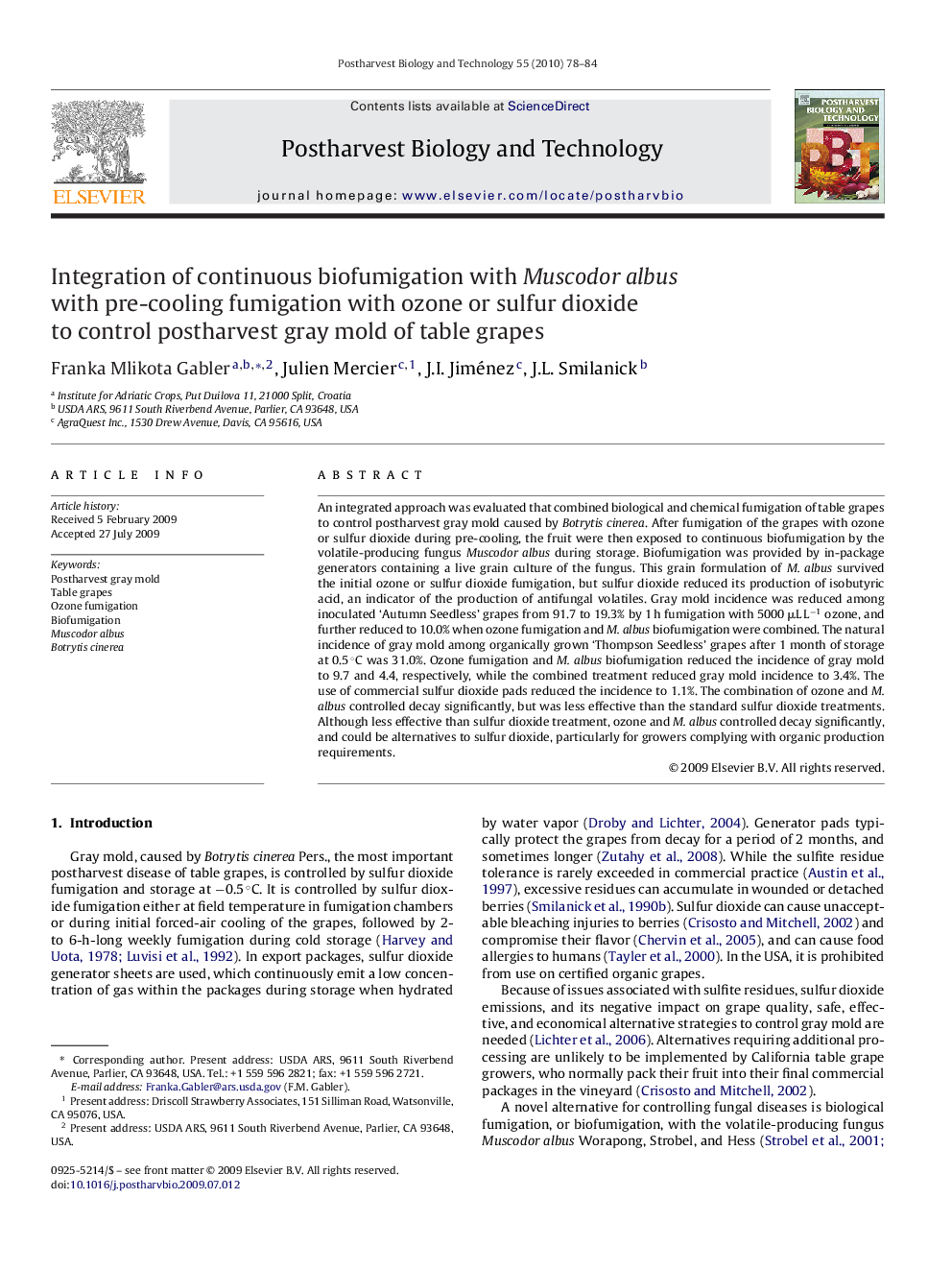| کد مقاله | کد نشریه | سال انتشار | مقاله انگلیسی | نسخه تمام متن |
|---|---|---|---|---|
| 4519242 | 1322825 | 2010 | 7 صفحه PDF | دانلود رایگان |

An integrated approach was evaluated that combined biological and chemical fumigation of table grapes to control postharvest gray mold caused by Botrytis cinerea. After fumigation of the grapes with ozone or sulfur dioxide during pre-cooling, the fruit were then exposed to continuous biofumigation by the volatile-producing fungus Muscodor albus during storage. Biofumigation was provided by in-package generators containing a live grain culture of the fungus. This grain formulation of M. albus survived the initial ozone or sulfur dioxide fumigation, but sulfur dioxide reduced its production of isobutyric acid, an indicator of the production of antifungal volatiles. Gray mold incidence was reduced among inoculated ‘Autumn Seedless’ grapes from 91.7 to 19.3% by 1 h fumigation with 5000 μL L−1 ozone, and further reduced to 10.0% when ozone fumigation and M. albus biofumigation were combined. The natural incidence of gray mold among organically grown ‘Thompson Seedless’ grapes after 1 month of storage at 0.5 °C was 31.0%. Ozone fumigation and M. albus biofumigation reduced the incidence of gray mold to 9.7 and 4.4, respectively, while the combined treatment reduced gray mold incidence to 3.4%. The use of commercial sulfur dioxide pads reduced the incidence to 1.1%. The combination of ozone and M. albus controlled decay significantly, but was less effective than the standard sulfur dioxide treatments. Although less effective than sulfur dioxide treatment, ozone and M. albus controlled decay significantly, and could be alternatives to sulfur dioxide, particularly for growers complying with organic production requirements.
Journal: Postharvest Biology and Technology - Volume 55, Issue 2, February 2010, Pages 78–84